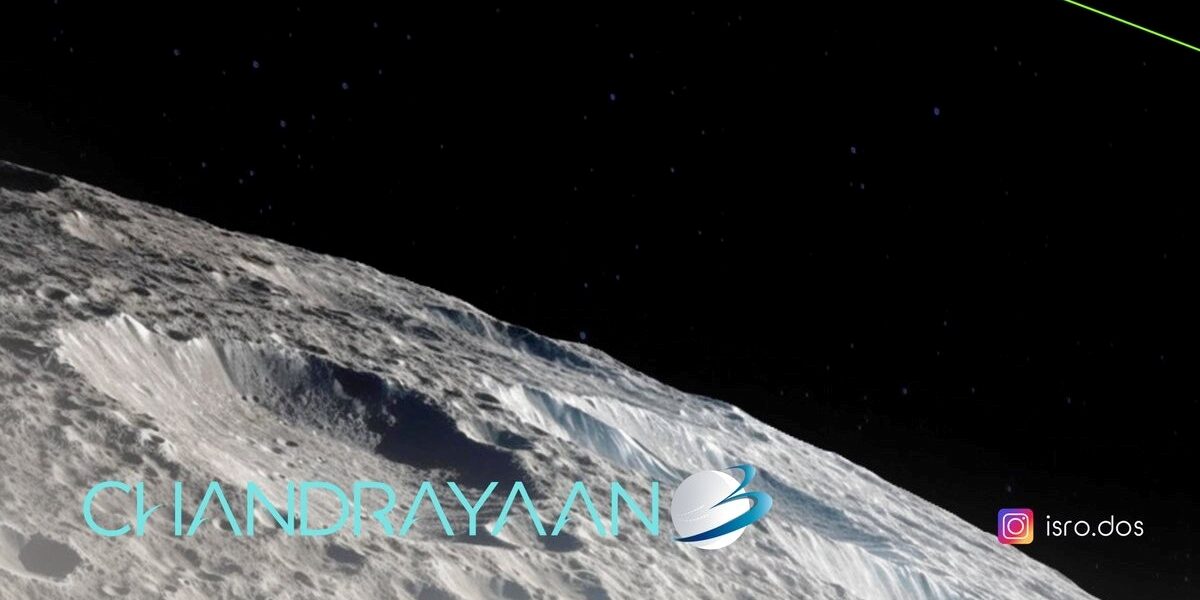On 17 August, 35 days after the mission launch, the lander module of Chandrayaan-3 had successfully separated from the propulsion module.

Images of the moon surface taken by the lander module of Chnadrayaan 3. (Isro/Twitter)
Russia has bowed out of the race to the Moon with India after its robot lander crashed on the lunar surface, setting Chandrayaan-3 on an easier course, while ISRO scientists achieved yet another successful manoeuvre to take the spacecraft closer to the Mon in its soft-landing attempt on 23 August.
ISRO on Sunday, 20 August, said it has successfully reduced the orbit of the Chandrayaan-3 mission’s Lander Module (LM), and it is now expected to touch down on the surface of the Moon at 6:04 pm on Wednesday, 23 August.
This came even as the Russian lander “Luna-25” crashed into the Moon after going into uncontrolled orbit.
“The apparatus moved into an unpredictable orbit and ceased to exist as a result of a collision with the surface of the Moon,” Russian space agency Roscosmos said in a statement.
Roscosmos said it lost contact with the spacecraft on Saturday after it ran into trouble while preparing for its pre-landing orbit after reporting an “abnormal situation” that its specialists were analysing. The Luna-25 was launched from the Vostochny Cosmodrome in Russia’s Far East on 10 August.
Incidentally, the ambitious Chandrayaan-2 had also crashed into the lunar surface four years ago, but its successor has ticked all the orbit-related boxes so far as part of its journey towards the Moon.
Chandrayaan’s LM, comprising the lander “Vikram” and rover “Pragyan”, is expected to touch down on the lunar surface on Wednesday at 6:04 pm, added ISRO, which had earlier said the soft landing would take place at 5:47 pm that day.
Having taken off on 11 August, Luna-25 was supposed to touch the Moon’s surface on 21 August, two days before Vikram’s scheduled landing.
ISRO said the second and final deboosting (slowing down) operation has successfully reduced the LM orbit to 25 km x 134 km. The module would undergo internal checks and await sunrise at the designated landing site. The powered descent is expected to commence on 23 August 2023, around 5:45 pm, ISRO said in a post on X.
Chandrayaan-3 Mission:
🇮🇳Chandrayaan-3 is set to land on the moon 🌖on August 23, 2023, around 18:04 Hrs. IST.
Thanks for the wishes and positivity!
Let’s continue experiencing the journey together
as the action unfolds LIVE at:
ISRO Website https://t.co/osrHMk7MZL
YouTube… pic.twitter.com/zyu1sdVpoE— ISRO (@isro) August 20, 2023
The Russian setback brought back memories of ISRO’s Chandrayaan-2 with the lander “Vikram”, along with its rover “Pragyan” crash landing on 6 September 2019, while attempting a touchdown in the south pole of the Moon.
Russia’s space agency Roscosmos said in accordance with the flight programme of the automation station Luna-25, on 19 August, it was planned to issue an impulse to form its pre-landing elliptical orbit.
However, the communication was interrupted and the measures taken to get in touch with Luna-25 did not produce any results.
According to ISRO, India’s pursuit of space exploration will reach a remarkable milestone with the Chandrayaan-3 mission poised to achieve a soft landing on the surface of the Moon.
This achievement marks a significant step forward for Indian Science, Engineering, Technology, and Industry, symbolising our nation’s progress in space exploration, it said.
This eagerly anticipated event will be broadcast live on 23 August, starting from 5:27 pm IST on multiple platforms, including the ISRO website, its YouTube channel, the agency’s Facebook page, and DD National TV channel.
“The soft landing of Chandrayaan-3 is a monumental moment that not only fuels curiosity but also sparks a passion for exploration within the minds of our youth,” ISRO said.
“It generates a profound sense of pride and unity as we collectively celebrate the prowess of Indian science and technology. It will contribute to fostering an environment of scientific inquiry and innovation,” it said.
In light of this, all schools and educational institutions across the nation are invited to actively publicise this event among students and faculty, and organise a live streaming of the Chandrayaan-3 soft landing on campuses, ISRO said.
On Thursday, 35 days after the mission was launched on 14 July, the lander module of Chandrayaan-3 had successfully separated from the propulsion module.
ISRO sources earlier said that after the separation, the lander would undergo “deboost” (the process of slowing down) operations to place it in an orbit where when it’s at a point closest to the Moon (Perilune), it would be at a distance of 30 km and its farthest point (Apolune) it would be 100 km away.
At this point, the soft landing on the south-polar region of the Moon will be attempted.
Around 30 km altitude, the lander enters the powered braking phase and begins to use its thrusters to reach the surface of the Moon, they said. At an altitude of about 100 m, the lander would scan the surface to check whether there are any obstacles and then start descending to make a soft landing.
Post its launch on 14 July, Chandrayaan-3 entered into lunar orbit on 5 August, following which orbit reduction manoeuvres were carried out on the spacecraft on 6, 9, 14, and 16 August, ahead of the separation of both its modules on 17 August, in the run-up to the landing on 23 August.
(Disclaimer: The headline, subheads, and intro of this report along with the photos may have been reworked by South First. The rest of the content is from a syndicated feed, and has been edited for style.)

Jul 10, 2024

May 27, 2024

May 15, 2024

May 02, 2024

Apr 29, 2024

Apr 29, 2024